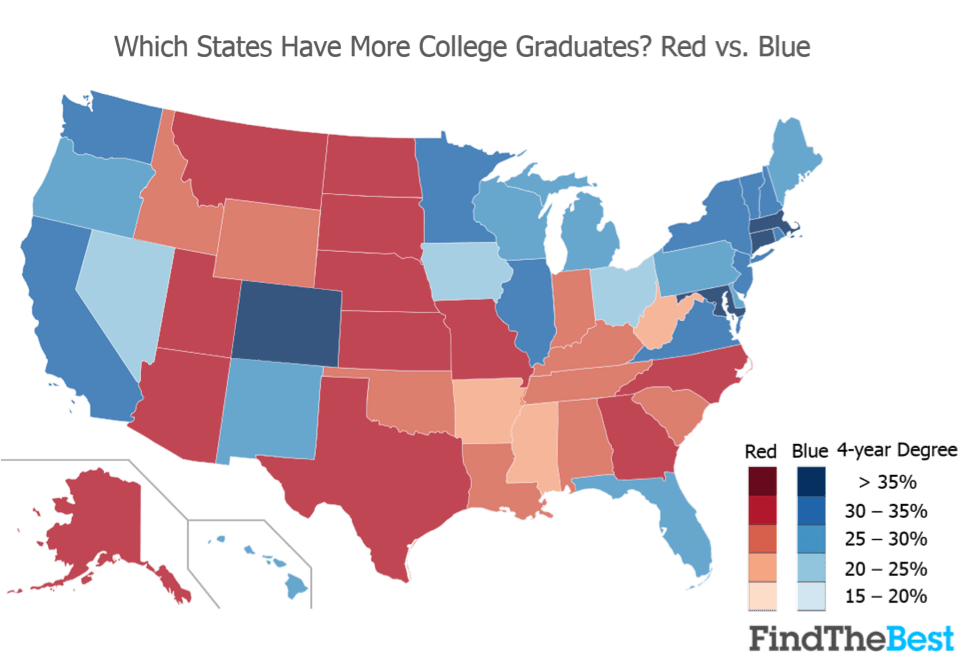Education is a cornerstone of a thriving society, influencing economic development, social mobility, and overall quality of life. In the United States, however, there are significant disparities in educational attainment across different states. This article provides a comprehensive overview of America's least educated states, examining the factors contributing to these educational challenges and their implications for residents. By understanding these issues, we can better address the educational needs of these communities and work towards solutions that promote equitable access to quality education.
The following sections will explore the educational landscape in these states, highlighting statistics, key challenges, and potential solutions. Our analysis is rooted in credible data and research, ensuring that the information presented is both informative and trustworthy. As we delve into this topic, we will also consider the broader implications of educational disparities on economic and social outcomes in these regions.
In addition to discussing the least educated states, we will provide insights into how these educational challenges can be overcome and what strategies can be implemented to improve educational attainment. By focusing on these critical issues, we aim to foster a deeper understanding of the education system in the United States and encourage meaningful dialogue around potential reforms.
Table of Contents
- Understanding Education Disparities
- Top Least Educated States
- Factors Contributing to Low Education Levels
- Impact of Educational Disparities
- Statistical Analysis of Education
- Potential Solutions
- Case Studies
- Conclusion
Understanding Education Disparities
Education disparities in the United States are stark and multifaceted. Various socioeconomic factors contribute to these disparities, including poverty rates, access to quality resources, and the availability of qualified educators. Understanding the landscape of educational attainment is essential for identifying the least educated states and the challenges they face.
The Role of Socioeconomic Factors
Many of the least educated states are also those with high poverty rates. This correlation is critical, as families living in poverty often lack access to essential educational resources. Some contributing socioeconomic factors include:
- High unemployment rates
- Limited access to healthcare
- Underfunded schools
- Lack of community support programs
Top Least Educated States
According to recent data from the U.S. Census Bureau and other educational research organizations, the following states consistently rank among the least educated in the nation:
| State | High School Graduation Rate | Bachelor’s Degree Attainment |
|---|---|---|
| Mississippi | 86.6% | 22.5% |
| Louisiana | 83.9% | 23.1% |
| Alabama | 90.1% | 25.2% |
| West Virginia | 89.5% | 21.3% |
| New Mexico | 75.5% | 25.1% |
Factors Contributing to Low Education Levels
Various factors contribute to the low education levels observed in these states, including historical, economic, and cultural influences. Understanding these factors is crucial for addressing the challenges faced by these educational systems.
Historical Context
Many of the least educated states have a history of economic challenges and limited investment in education. Factors such as:
- Historical segregation and inequality
- Economic reliance on industries with low educational requirements
- Inadequate funding for public schools
have created a cycle of poverty and low educational attainment.
Cultural Attitudes Towards Education
Cultural perceptions of education also play a significant role in educational outcomes. In some communities, there may be:
- A lack of emphasis on higher education
- Societal norms that do not prioritize academic achievement
- Limited exposure to role models with advanced degrees
These cultural attitudes can impact students' motivation and aspirations.
Impact of Educational Disparities
The ramifications of low educational attainment extend beyond individual outcomes; they affect entire communities and states. Some of the most significant impacts include:
- Higher unemployment rates
- Increased rates of poverty
- Lower overall economic growth
- Higher crime rates
Addressing these disparities is not only a moral imperative but also essential for the economic vitality of these regions.
Statistical Analysis of Education
Data from the National Center for Education Statistics (NCES) reveals alarming trends regarding educational attainment in the least educated states. Some key statistics include:
- Mississippi ranks last in the nation for educational attainment.
- Louisiana has one of the highest dropout rates in the country.
- Alabama's college graduation rate remains below the national average.
These statistics highlight the urgent need for targeted interventions and reforms.
Potential Solutions
To combat the educational challenges faced by the least educated states, a multifaceted approach is essential. Potential solutions include:
- Increased funding for public education
- Investment in early childhood education programs
- Community engagement initiatives to promote the value of education
- Partnerships with local businesses to create job training programs
Implementing these solutions requires collaboration between state governments, educational institutions, and community organizations.
Case Studies
Examining successful educational initiatives in similar regions can provide valuable insights. For example:
- Florida's focus on early childhood education has led to significant improvements in literacy rates.
- California's community college system has successfully increased access to higher education for low-income students.
These case studies illustrate the potential for positive change when targeted strategies are employed.
Conclusion
In conclusion, understanding America's least educated states is vital for addressing the educational disparities that exist across the nation. By identifying the factors contributing to low educational attainment and exploring potential solutions, we can work towards creating a more equitable and prosperous society for all. We encourage readers to share their thoughts and experiences related to education in these states, as well as to explore further resources on improving educational outcomes.
By fostering dialogue and collaboration, we can empower communities to overcome the challenges they face and build a brighter future for generations to come.
Thank you for taking the time to explore this important topic. We invite you to leave comments, share this article with others, or read additional articles on our site for more insights into educational issues across the United States.




